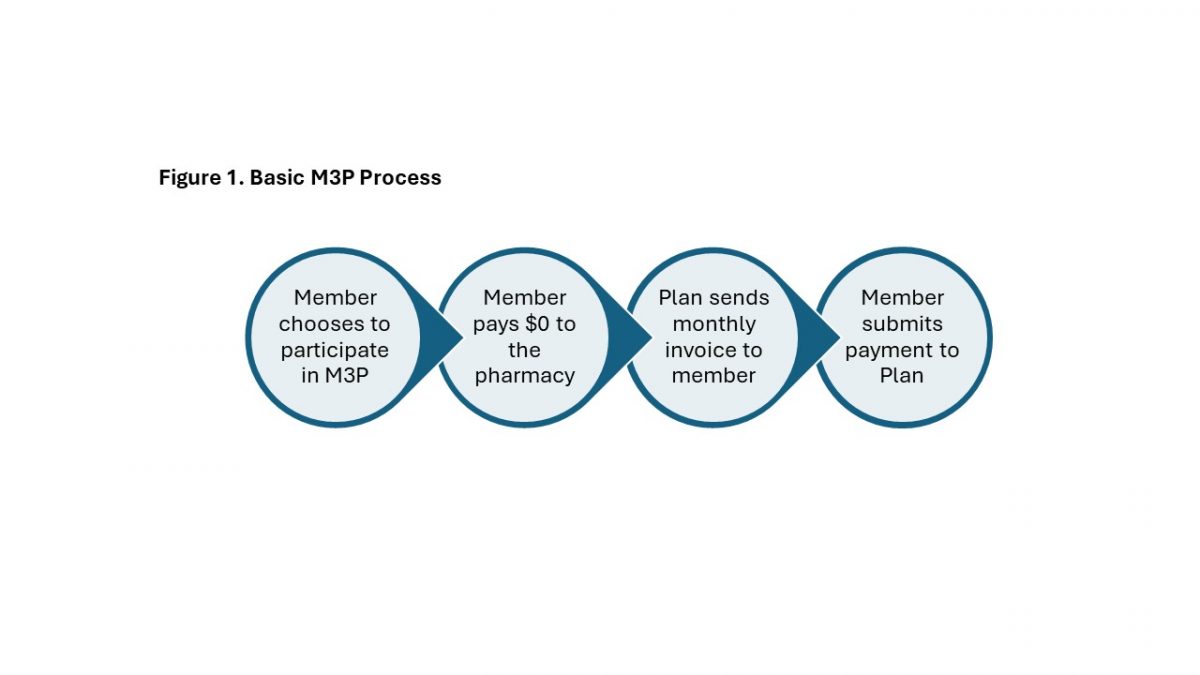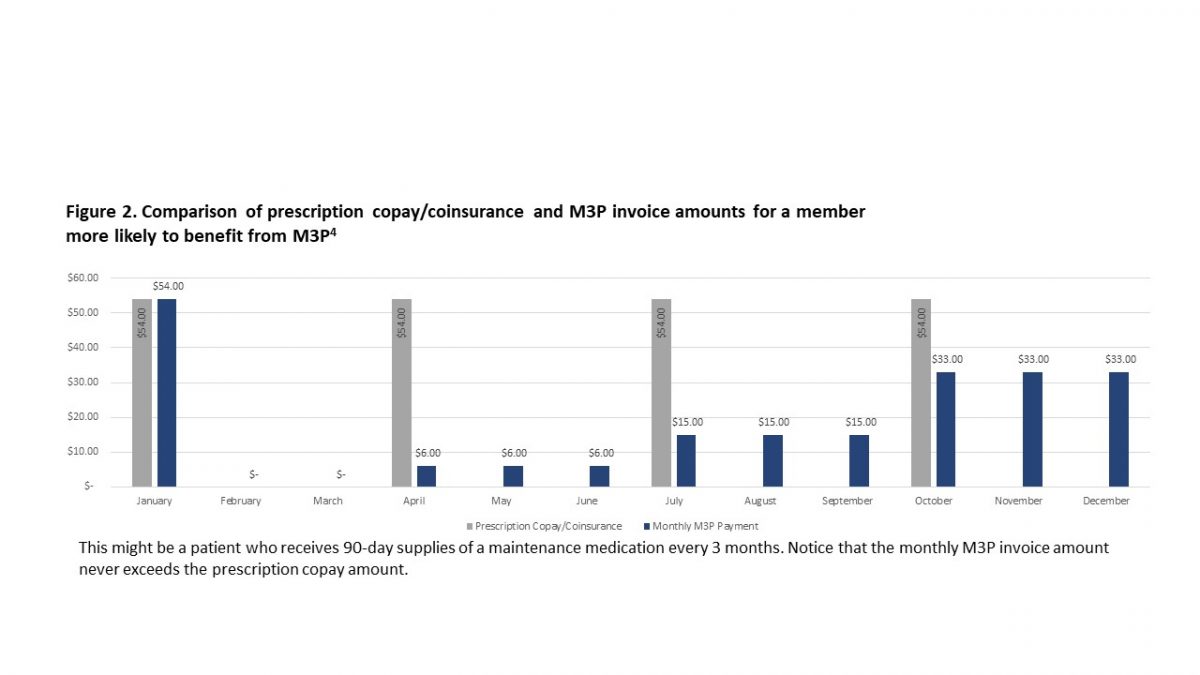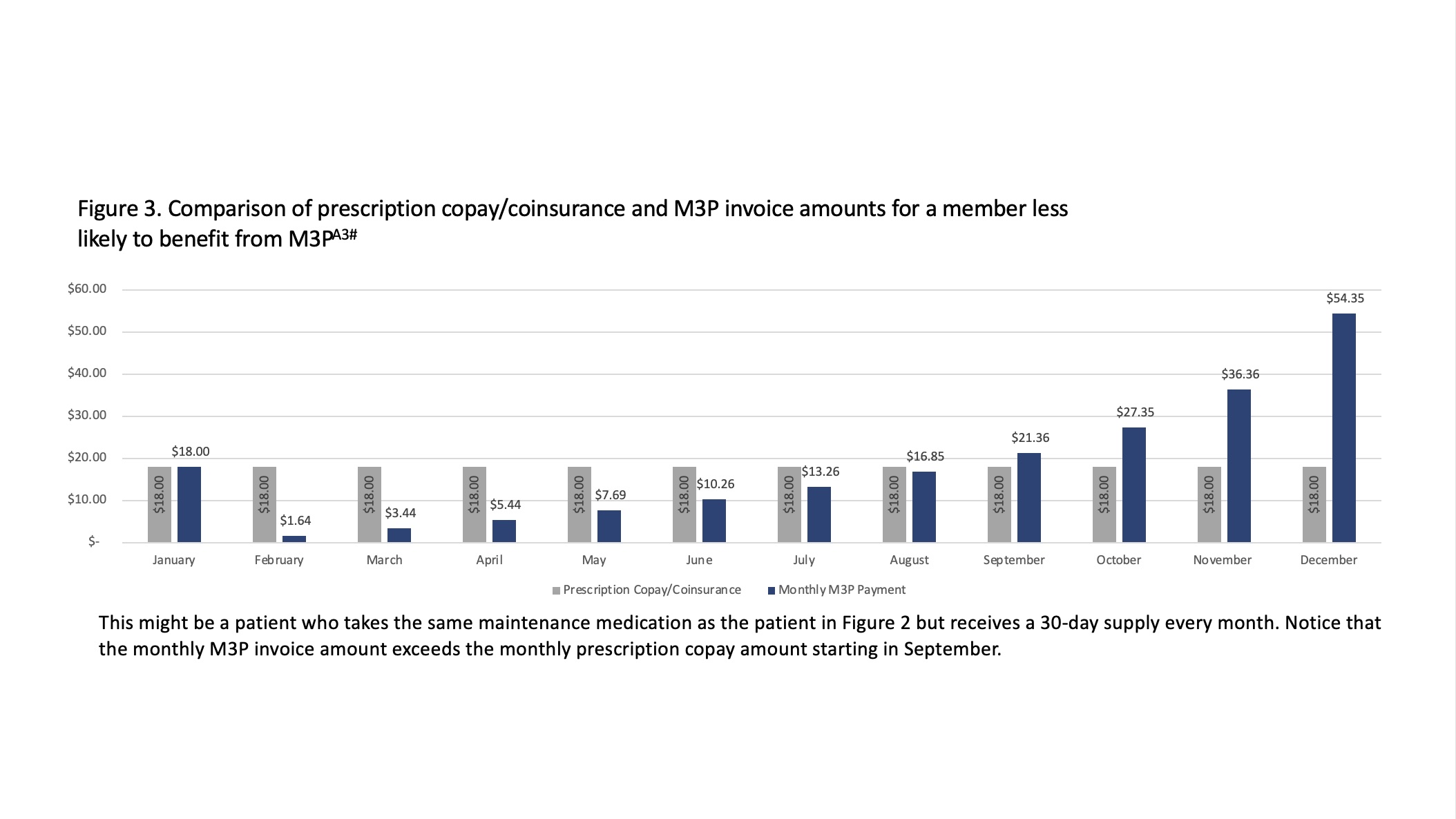INTRODUCTION
Dolly is a pharmacist in an independent pharmacy working 9 to 5 (what a way to make a living!). Her technician, Miley, calls her to the front to talk with Carol, a 60-year-old woman who consistently wears her smartwatch. Miley tells Dolly, “You have to hear this!” Carol reports that while walking her dog, she tripped and landed face down on the pavement. Carol says her smartwatch called out, “It looks like you’ve taken a hard fall,” and asked if it should call 911. Carol didn’t need emergency services, but she was grateful that the watch detected her fall and could help if necessary. If Carol had been unresponsive, the watch would have called 911 automatically. When Carol left, Miley said, “You know Dolly, I am really concerned that artificial intelligence (AI) is going to replace me.” Dolly nodded and said, “I know. I have some concerns, too. It's enough to drive you crazy if you let it.” Dolly realizes she needs to look into AI and its possibilities.
AI is a technology that learns, reasons, and performs tasks to mimic humans.1 A 2022 Pew Institute survey of 11,004 Americans found that while 55% use AI frequently, awareness of its presence and capabilities varies.2 Only 30% of participants demonstrated high AI awareness, with factors such as education level, income, and Internet use influencing their familiarity.2 Despite growing adoption, public engagement is mixed, with concerns about AI’s impact fueling debate.
Recently, many media outlets have published articles about AI, and many of those pieces have generated public debate and concern.3-5 Public engagement in ethical debates about AI’s use and limitations is only reasonable and well advised if individuals understand its strengths and limitations. Despite the widespread adoption of AI technologies among Americans, another Pew Research Center survey reported that only 15% express more excitement than concern about its increased use in daily life, 38% express more concern than excitement, and 46% are mixed, containing both excitement and concern.6 Nonetheless, AI’s adoption and market value increases annually. Researchers estimated the AI market size at $40 billion in 2022 and expect it to grow to $1.3 trillion by 2032.7
Americans rely on AI in their everyday lives for web searches, task automation, and more—often without even realizing it. Engineers have seamlessly integrated AI into technologies like Siri, Alexa, and Google Home, making everyday tasks more convenient. With almost limitless possibilities, AI continues to evolve and grow, including in the healthcare field.
PAUSE AND PONDER: Take a moment and look at this list. Which of the following are AI powered? You can find the answers at the end of this activity (after the CONCLUSION).
- Air conditioners
- Automatic washing machines
- Basic calculators
- Customer service chatboxes
- Email services
- Facial recognition technology
- Media/playlist recommendations
- Purchase recommendations
- Refrigerators
- Social media
- Television remote controls
- Voice assistants
- Wearable fitness trackers
Defining AI
AI systems predict, recommend, and make decisions using machine-based algorithms. Programmers design these systems with a set of rules and human-defined objectives to accomplish a variety of tasks.8,9 As Table 1 implies, no single definition fully captures AI’s complexity, and its applications are broad.1
| Table 1. Definitions and Possibilities Associated with AI1 |
| An artificial system… |
| · performs tasks in predictable and unpredictable conditions with minimal human oversight |
| · learns and improves its performance from experience and data set exposure |
| · is developed in software or hardware |
| · works to complete tasks requiring human-like action, cognition, communication, learning, perception, or planning |
| · is developed to mimic human cognition and neural networks |
| · is made with techniques for approximating a cognitive task |
| · is designed to act rationally |
AI Models
AI system designs vary based on the AI model used. Common algorithms include machine learning, neural network, deep learning, natural language processing, and rule-based expert systems. Neural network and deep learning fall under the broader category of machine learning. Table 2 describes how developers tailor each model to accomplish specific tasks in unique ways.10 It also captures common AI models used in healthcare with examples for their application.
| Table 2. Explanations and Examples of AI Model Applications10-15 |
| Model |
Explanation |
Example(s) |
| Machine Learning |
· Fits models to data
· Trains models with data sets
· Encompasses neural network and deep learning models |
· Precision medicine: uses information about a person’s genes and lifestyle to prevent, diagnose, or treat disease
· A breast cancer prediction algorithm: interpreted 38,444 mammograms from 9,611 women to predict biopsy malignancy and distinguish between normal and abnormal screenings |
| Neural Network |
· Inspired by and mimics the human brain
· Uses nodes that mimic human neurons to process and learn from data
· Considers inputs, outputs, and weights of variables |
· Google Photos: uses a neural network to categorize images based on face or object recognition |
| Deep Learning |
· Complex model building off the neural network
· Uses features and variables used to predict an outcome |
· Facial recognition: uses deep learning for security purposes like unlocking smartphones or for tagging people on social media
· Enables the identification of individuals as the same person, even with changes to physical appearance, lighting, or visual obstructions |
| Rule-Based Expert Systems |
· If-then format for decision-making processes
· Constructs rules in a knowledge domain |
· Medical diagnosis: if the patient has a fever and a sore throat, then consider the possibility of strep throat |
After some research, Dolly was ready to determine the model AI uses to detect falls. She found that smartwatches rely on machine learning models, including deep learning, to identify falls. Specifically, the technology uses accelerometer (an instrument that detects and measures speed and directional vibrations) and gyroscope (an instrument that detects and measures angular momentum) data from the watch to detect abrupt movements and shifts in motion that could signal a fall.16
PAUSE AND PONDER: How can healthcare professionals and leaders integrate AI models into healthcare?
AI IN DISEASE MANAGEMENT
Integrating AI into healthcare can transform patient care and streamline workflows.10 A recent survey reported that 80% to 90% of forecast panelists believe that AI will improve care, simplify patient referrals, and facilitate prior authorizations.8 Also, 63% of participants indicated that it is very or highly likely for health systems to adopt AI for pharmacist documentation. AI can specifically help document patient information in electronic health records (EHR).8 Some physicians and advanced practice providers are already using AI to improve patient documentation.8
Generative AI uses machine models to analyze data patterns and create content like images and text. In healthcare, it enhances patient care and supports whole-person health.8 This technology can assist with medical image interpretation, inform disease diagnosis, identify care gaps, personalize treatment plans, enable remote patient monitoring, and support early intervention and preventive care.8,17 In her research, Dolly found a number of applications that could improve patient care.
Diabetes Management
By 2050, statisticians expect that 1.31 billion Americans will have diabetes.18 Diabetes management requires frequent follow-up and comprehensive examinations to monitor blood glucose levels and detect complications.19 Medical resources are unevenly distributed across the United States (U.S.). Physicians are often concentrated in wealthier and suburban areas, leaving rural regions with limited access to primary and specialty care. Yet, rural populations have a 16% higher prevalence of type 2 diabetes (T2DM) and a 20% higher T2DM-related hospital mortality rate compared to urban populations.20
Effective diabetes management requires a collaborative approach involving endocrinology, nutrition, nephrology, ophthalmology, pharmacy, and podiatry. Since primary care alone is insufficient to handle this complex condition, rural areas face significant challenges in diabetes management.19 By 2034, researchers estimate a shortage of 124,000 doctors in the U.S., with the majority of loss in primary care.21 If this prediction is accurate, individuals in rural areas will face growing challenges accessing healthcare. Given the uneven distribution of healthcare resources across various regions, AI advancements may enhance efficiency in diabetes care while diminishing overall health expenditures.10,19
To achieve better care for all people, clinicians may use predictive models to assess disease progression in T2DM, forecast blood glucose levels, and detect diabetic retinopathy.22
AI technology may prevent diabetes onset in high-risk patients by ensuring early medical intervention.19 AI technologies may use non-invasive, cost-effective methods capable of early identification and classification of diabetes.
An emerging theory is that machine learning using facial texture features and tongue color analysis could predict diabetes onset and identify those at high risk. In patients with diabetes, skin manifestations are common.23 These manifestations range from acanthosis nigricans (demarcated plaques with grey to brown pigmentation), to dermopathy (spots on the front of lower legs), to skin thickening.23 The pathophysiology of these conditions is not entirely understood. However, aging and diabetes causes increased collagen interlinking. Consequentially, skin changes like thickening and hardening may occur.23
In Chinese Medicine, practitioners believe face regions reflect the health of internal organs.24 Asian researchers postulated that tongue discoloration, such as a yellow coating, is linked to diabetes, with studies showing a connection between tongue features and glucose metabolism.25,26 In 2017, researchers conducted a study to determine which model analyzes facial texture and color to detect diabetes most accurately.24 They took facial images, divided them into regions, characterized regions by textures, and analyzed them using eight different models.24 In 2019, Chinese researchers collected tongue images from 570 patients and analyzed their color and texture using AI models. The results demonstrated that these models may effectively associate tongue images with diabetes, but these studies remain preliminary.25
In 2024, 8.7 million Americans or 3.4% of all U.S. adults met laboratory criteria for diabetes but were not aware that they had this condition.27 Delayed diagnosis is a common concern in diabetes, with about 45% of adults worldwide undiagnosed.18 Current diabetes diagnostic tests include hemoglobin A1C, fasting plasma glucose, 2-hour plasma glucose, and oral glucose tolerance test (OGTT). These four tests are invasive as they require venipuncture.24 Non-invasive diagnostic methods, such as analyzing facial images and tongue color, could help identify diabetic patients who are unaware of their condition.
Dolly is fascinated by this information, but aware that these findings are very preliminary. Recently, one of her favorite patients, Lily, had gained weight rapidly in the early trimesters of pregnancy. Her obstetrician ordered an OGTT. Before the test, Lily fasted, then drank a sugary solution and had her blood sugar levels measured at specific intervals. This process was challenging for Lily, as the sight of blood and having her blood drawn nauseates her. Dolly wishes that non-invasive methods were currently available.
In primary care, AI technologies may create personalized diet and exercise plans for people with diabetes. These plans could align with clinician recommendations and contribute to effective diabetes management.18
Despite the promise of AI technology in diabetes management, predicting blood glucose levels remains challenging because food and subcutaneously administered insulin absorption rates vary. AI technologies are increasingly embedded into continuous glucose monitoring (CGM) systems to predict blood glucose levels. CGMs track patients’ blood glucose levels in real time and eliminate frequent finger pricks. CGMs provide regular and accurate blood glucose data, offering greater convenience than traditional finger sticks. Regardless, errors may still occur. CGM may report blood glucose levels that differ from actual values by roughly 9%. Differences in actual blood glucose level measurements may be an important consideration for individuals with diabetes and their healthcare providers. Soon, it’s likely that AI will also measure ketone levels; some systems will be integrated into CGMs.29
Another obstacle is when clinicians’ recommendations differ from those generated using AI, as both may be correct. To resolve discrepancies, AI may serve as a tool to support human decision-making. Last, AI technology is designed based on the data it receives. Data quality is important for accurately predicting and managing diabetes.19,22
Cardiac Care
Like diabetes, heart failure (HF)—the inability of an individual’s heart muscle to pump enough blood—is becoming more prevalent. Common symptoms include shortness of breath, fatigue, and swelling of the legs, ankles, or abdomen.30 Worldwide, approximately 60 million individuals live with HF.31 Managing HF requires accurate diagnoses and treatments tailored to individual patients. AI technologies may help diagnose, predict outcomes, classify, and optimize treatment strategies in HF.32
Researchers have published much information on HF, and information on the use of machine learning to analyze this data is increasing. AI algorithms address challenges like data noise (large amounts of unwanted data that make analysis difficult), false correlations (no relationship between two variables), and statistical power issues (a study’s inability to detect accurate results or effects). By streamlining data analysis, AI complements traditional statistical methods to gather insights into HF.32
Researchers have created an AI-based diagnostic algorithm for HF. The study enrolled 600 patients with and without HF. The results demonstrated a diagnostic accuracy of 98% and surpassed non-specialist clinicians, who had an accuracy of 76%. In regions with limited access to HF specialists, these AI technologies could be beneficial.32,33
Patients with HF also face high 30-day readmission rates. Decreasing HF hospital admissions and readmissions is important considering the financial penalties that the Centers for Medicare and Medicaid Services (CMS) impose. CMS reduces hospital payments by a percentage following unplanned 30-day readmissions for patients with HF.34 The hospitalization rate has improved from about 367 hospitalizations per 100,000 adults in 2016 to 350 hospitalizations in 2020. However, Healthy People 2030’s target is 330 per 100,000, meaning more improvement is needed.35
Deep learning AI models may help lower hospital readmissions for patients with HF. In a 900-patient cohort study, these technologies outperformed traditional techniques in predicting readmission rates. This AI algorithm used heart sounds, respiratory rate, tidal volume (the amount of air that moves in and out of the lungs during a normal breath), heart rate, and patient activity to make predictions.32
The rising use of remote monitoring and wearable devices is likely to expand AI’s effectiveness in managing HF. AI-powered smartwatches programmed with electrocardiography features demonstrate acceptable accuracy in detecting HF with reduced ejection fraction. These technologies allow continuous data streams, better prediction in hospital readmission rates, and earlier HF identification.31,32
Dolly finds that smartwatches can also be useful for patients who have or are at risk for atrial fibrillation (AFib). Carol, the patient whose smartwatch detected a fall, has been worried that she might develop AFib, which causes irregular heartbeats. Last week, the watch detected an episode of AFib. When Carol visited her provider, she brought the printed electrocardiogram showing the episode. This enabled the provider to make informed decisions about next steps, supported by AI technologies.
Sepsis Identification
Globally, sepsis—a life-threatening response to an infection—is a leading cause of illness and death.36 Patients with sepsis present with varying degrees of severity, ranging from mild sepsis to septic shock. It can lead to tissue damage, organ failure, and death. Sepsis’s variable presentation makes early detection challenging. However, prompt recognition of sepsis is critical, as every hour without treatment increases the risk of death.36
AI technologies may predict sepsis hours before its onset. Through machine learning and predictive algorithms, AI improves the accuracy of sepsis detection in a clinical setting.36-38 Researchers conducted a prospective, multi-center study of 590,736 patients across five hospitals, with 6,877 included in the analysis.38 During the study, researchers used the Targeted Real-time Early Warning System (TREWS) as a sepsis alert system for providers.38 TREWS is a machine learning-based algorithm that notifies providers when a patient is at high risk for sepsis.
TREWS integration enabled early intervention from providers and reduced the hospital mortality rate by 5.1% when providers responded to the alert within three hours.38 The TREWS intervention group also saw a 4.5% decrease in overall mortality compared to patients whose providers did not respond within three hours. Patients flagged as high risk also experienced reductions in organ failure severity.38 A critical point is provider response time. It is possible that providers who responded more quickly simply had better resources or teams at their disposal.39
This study’s major limitation was the predetermined alert settings, which may have influenced the alerts and their associations with clinical outcomes.38 TREWS notified providers when patients exhibited significant findings related to sepsis. This constraint limits the study’s generalizability, as variations in alert settings may lead to significant differences in the timing of alerts and, potentially, patient outcomes. Future implementation may adopt a less restrictive model, allowing earlier warnings by identifying patients with fewer sepsis-related criteria.38
Alert fatigue—healthcare provider desensitization to safety alerts—may also limit this study’s applicability to clinical practice.38 Alert fatigue often causes individuals to not respond properly to safety alerts and warnings.40 TREWS integration may contribute to the alert fatigue phenomenon that plagues the healthcare industry.
Despite this study’s promising results, few large, randomized controlled trials (RCTs) have evaluated AI-based alerts for patients with sepsis.37
Acute Kidney Injury Alert
Acute kidney injury (AKI; a decline in the kidney filtrate rate) impacts approximately 18% of inpatients and greater than 50% of patients in intensive care units.41 Like managing HF and diabetes, early detection is critical.41,42 Two studies have examined AI in AKI.
Chinese researchers led a double-blind RCT to evaluate the impact of electronic alerts on adults with AKI.41 They randomized more than 2,000 hospitalized patients to determine whether an AKI alert combined with management strategies improves care and clinical outcomes. The data showed that alerts did not improve kidney function or overall patient outcomes. However, the alerts influenced treatment approaches. Patients in the alerts group received more intravenous fluids (82.6% vs 61.8%), fewer nonsteroidal anti-inflammatory drugs (5% vs 11%), and more AKI documentation at discharge (49.9% vs 27.3%).41
Another double-blinded, multicenter RCT enrolled more than 6,000 patients. Researchers concluded that the AKI alerts did not reduce the risk of AKI progression, dialysis initiation, or death within 14 days of randomization.42
Both studies found that integrating their specific AKI alert algorithms into EHR did not improve patient outcomes.41-43 However, pairing these alerts with management strategies influenced providers’ treatment decisions. These findings suggest that while changes in treatment strategies may not directly benefit patients, they may help avoid medications that can contribute to AKI.41,42
Image Interpretation
Beyond its use in facial recognition for social media and security, AI also has the proven potential to analyze medical images. Specifically, AI technologies show promise in oncology for identifying and categorizing cancers, and in managing diabetic retinopathy.
Oncology
Researchers are developing AI models for cancer imaging, aiming to improve tumor detection, characterization, and monitoring.10,44 These tools identify various cancers and predict patient outcomes very accurately.45 They can help minimize oversights and serve as an initial screen to reduce omission errors.
AI tumor characterization involves tumor segmentation (outlining and identifying boundaries of the tumor in images), diagnosis, and staging. AI-driven automated segmentation has the potential to enhance the efficiency, reproducibility, and quality of tumor measurements.44 It may also improve the ability to monitor changes in tumors over time. Despite these promising advancements, challenges remain in ensuring accurate detection, characterization, and monitoring.44
Diabetic Retinopathy
AI models can detect diabetic retinopathy, a complication of diabetes that progressively impairs vision over time. AI identification of diabetic retinopathy is facilitated through retinal fundus imaging, which has demonstrated high sensitivity and selectivity, as defined in the SIDEBAR.22,46,47
| SIDEBAR: Differentiating Sensitivity and Specificity47 |
| Sensitivity |
Specificity |
| · A test’s ability to determine whether an individual with the disease is positive
· High sensitivity: limited false negative results—few cases where the disease is missed |
· A test’s ability to determine if an individual who does not have the disease is negative
· High specificity: limited false positive results
· Using a test with low specificity causes many people without the disease to screen as positive and receive treatment |
In 2017, researchers enrolled 521 participants across 10 U.S. centers. Each patient underwent a dilated ophthalmoscopy (an eye exam). The AI algorithm accurately identified 36 of 37 positive cases (97% sensitivity) and 162 of 184 negative cases (88% specificity).46 The researchers concluded that the AI system detects mild diabetic retinopathy more effectively than general ophthalmologists or retina specialists. This tool may offer a low-cost solution for diabetic retinopathy screening and help reduce the burden of diabetic eye screenings.46
Electronic Health Records
Approximately 80% of clinically relevant healthcare information is unstructured data.48 Applying a natural language processing (NLP)-based algorithm to the EHR may help hospitals identify patients who need a clinical pharmacist’s review. NLP models possess the ability to engage in speech recognition, text analysis, and translation, with goals centered around language processing. One example of its use is transcribing patient interactions, which may be helpful for medication reconciliation. Similarly, NLP-based systems can prepare reports, such as patient notes within the EHR, and analyze these notes.10 By analyzing notes, the system can also identify patients requiring extensive medication interventions and categorize them as high risk. This classification enables pharmacists to dedicate their efforts to patients most likely to benefit, ultimately enhancing their impact on patient care.48
AI models may also detect and alert providers when an ordered medication deviates from its typical use pattern. AI captures information on standard dosages and indications, aiding drug selection, dose recommendations, drug-drug interaction detection, and order entry.49 This tool supports pharmacists and other healthcare providers in clinical decision-making to minimize medication-related errors and improve patient outcomes.49
Generative AI models may streamline providers’ documentation processes. Clinicians spend approximately 35% of their time documenting patient data and notes.50 AI technologies may reduce this workload, allowing providers to focus more on patient care. However, before integrating AI into documentation, leaders must set clear guidelines. For effective use, these guidelines must address concerns such as data security, accuracy, reliability, ethical considerations, and the need for ongoing evaluation of AI programs to ensure regular maintenance and optimization.51
The possibilities for AI integration in EHR are endless. With proper use, these resources help streamline workflow and increase time providers spend on direct patient care.
PAUSE AND PONDER: What are the opportunities and challenges for AI integration into healthcare?
AI CHALLENGES
A major challenge is AI’s inability to explain how it arrives at its conclusions, referred to as model transparency. Predictive modeling and deep learning procedures are difficult to adopt in clinical environments. The algorithms behind these models often lack transparency and experimental context.8,22
For clinicians to accept AI, they must understand how models generate recommendations. By detailing internal decisions, behaviors, and actions, AI’s developers can build trust among healthcare providers. Developers must equip clinicians with sufficient information to understand each event’s causes. Subsequently, providers can determine how to incorporate AI recommendations into their clinical decision-making processes.8,22
Another barrier arises from EHRs’ limitations. Since EHR data is not publicly available, AI technologies may struggle to generate comprehensive recommendations. Also, healthcare organizations often restrict data access to internal use, leaving predictive modeling without sufficient information.22 To address this challenge, some experts propose federated learning. This allows institutions to contribute to a global model while keeping sensitive data within their respective systems.10 However, as AI processes large volumes of data, the risk of data breaches and unauthorized access increases. Protecting databases from security threats remains a challenge.8
Bias presents another obstacle. If data used in AI models is homogenous, the results may be skewed. Developers must ensure that training datasets include a wide range of patient demographics and conditions to prevent biased outcomes.8
Cost inhibits widespread adoption of AI. Institutions allocate resources for AI differently. Smaller, rural hospitals may struggle to implement these technologies due to financial constraints.8 Also, demonstrating a clear return on investment for AI integration is difficult. The limited cost avoidance data per intervention and impact on patient outcomes makes it challenging for hospital executives to justify AI investments.8
Legal and ethical considerations further complicate AI acceptance. Mistakes are inevitable with AI technologies. Who will be held accountable for errors, especially when they impact patient outcomes? Healthcare providers may be reluctant to adopt AI technologies if responsibility for potential AI errors is unclear.8,10 This also calls into question regulatory compliance. If AI becomes the standard of care, providers who choose not to use these tools may face legal and regulatory consequences.8,10
Before implementing AI in clinical practice, healthcare institutions must thoroughly test and validate each model. A designated committee containing diverse healthcare professionals should lead the approval process to ensure safe and effective implementation of AI models. This approval process and integration into daily practice may take years.10
After looking at how AI is used currently, the research underway, and AI’s challenges, Dolly feels confident that she can discuss changes in the workplace and pharmacy processes with Miley.
TAILORING AI TO PHARMACY PRACTICE
Many healthcare providers already recognize the implications of AI integration in healthcare. A recent survey asked pharmacists, “How likely is it the following will occur by the year 2029 in the geographic region where you work?”8 Table 3 displays the findings on AI integration in pharmacists’ documentation and medication histories.8
| Table 3. Forecast Panelists’ Survey Responses to AI Integration in 20298 |
| Response |
Percent of Responders |
| Statement 1: 50% of health systems will adopt technology in the EHR for pharmacist documentation to be completed by generative AI. |
| Very Unlikely |
4% |
| Somewhat Unlikely |
33% |
| Somewhat Likely |
44% |
| Very Likely |
19% |
| Statement 2: 25% of health systems will use a Chatbot to obtain medication histories. |
| Very Unlikely |
10% |
| Somewhat Unlikely |
33% |
| Somewhat Likely |
43% |
| Very Likely |
14% |
| AI, artificial intelligence; EHR, electronic health record. |
As healthcare professionals acknowledge AI’s expanding function, they must develop a strong understanding of these technologies. Pharmacists and pharmacy technicians, in particular, need a basic knowledge of AI.48 With this foundation, pharmacists can assess AI models’ strengths and limitations and determine when and how to use them effectively.
To establish a baseline understanding of AI technologies, institutions must integrate education and didactic experiences into training for pharmacy technicians, pharmacy students, and pharmacists.52,53 This will equip healthcare providers with the basic skills needed to evaluate AI models and understand its responsibility in improving patient care.
AI and the Pharmacy Workforce
Like Miley, may pharmacy personnel worry that AI may replace pharmacists and pharmacy technicians. In the United Kingdom, researchers estimate 35% of all jobs—including some pharmacy-related positions—could be automated in the next 10 to 20 years.10 However, they also predict job losses will amount to less than 5%. This is because of factors like cost of automation technologies, labor market dynamics, and regulatory and social acceptance. These circumstances create major barriers in the widespread adoption of AI across industries and may mitigate actual job loss.10
In healthcare, similar trends are expected. To date, AI has not eliminated jobs.10 Pharmacy student enrollment is unlikely to rise, and researchers predict that 20% of first year post-graduate residency spots will remain unfilled after the match. As a result, they anticipate the pharmacy workforce will decline.8 This projected reduction has led to expectations that AI will assist with repetitive pharmacy tasks, allowing pharmacists and technicians to focus on responsibilities that require human expertise.
With the integration of AI into healthcare, pharmacists are expected to expand their scope of practice into areas where they can use their skills more and influence outcomes.8,10 These include managing high-cost medications, bridging gaps in primary care, applying empathy and persuasion, and taking a big-picture approach to patient care. While AI is designed to mimic certain human actions, it is not human. It lacks interpersonal skills and the ability to build relationships. Ultimately, AI will complement pharmacists by streamlining repetitive tasks, addressing workforce shortages, and enabling them to use their unique human intelligence abilities.8,10
Adverse Drug Reactions
A primary responsibility for pharmacists in medication management is to mitigate patients’ risk of adverse drug reactions (ADRs). EHR systems use AI for ADR prediction and detection. For example, if a prescriber orders amiodarone for a patient who is already taking warfarin, the system is designed to alert healthcare providers that the combination leads to high bleeding risk. Current systems already deliver this alert, and an AI-assisted system may recommend providers decrease the patient’s warfarin dose empirically by 30% to 50%.54 However, like any test or algorithm, false positives and negatives can occur, meaning these systems are not foolproof. It is crucial that clinicians and pharmacists do not rely solely on these alerts for detecting ADRs or sending notifications. Instead, they should apply clinical decision-making and rely on their expertise.
A recent study involving 412 patients used a machine learning algorithm to predict the likelihood of ADRs in neonates.55 Researchers designed the algorithm to associate a risk score to predict and prevent ADRs, rather than simply display a warning as is done currently for certain medications. The model displayed high predictive accuracies, successfully detecting ADRs in patients with allergic, renal, central nervous system, and hepatic ADRs 78.9% to 90.2% of the time.49,55 These models illustrate AI’s broad application in ADR detection which supports clinical decision-making.
AI also offers opportunities to improve patient adherence. It can trigger patient-specific message alerts, such as medication renewal reminders for both the pharmacist and the patient. This ensures timely prescription refills, helps maintain a consistent medication supply, and supports better medication adherence for improved health outcomes. Wearable devices like smartwatches and smartphones also integrate AI technology that may encourage behavioral changes and enhance adherence.10 For example, some smartwatches offer a time-to-stand reminder. If individuals have not moved within the first 50 minutes of an hour, the watch will remind them to stand. Simple alerts like these increase movement and encourage behavior changes.
Beyond clinical applications, AI has the potential to transform pharmacy operations. AI technology may request and process prior authorizations (something of great interest to Dolly and Miley), manage the supply chain, optimize pharmacy revenue cycles, and track financial performance.8
CONCLUSION
AI technologies are likely to revolutionize healthcare by enhancing clinical decision-making, improving patient outcomes, and streamlining workflows. Through automation of routine tasks and data analysis, AI can help healthcare providers deliver more efficient care. However, significant barriers including algorithm transparency, bias, cost, and accountability concerns must be addressed before AI is widely adopted. Overcoming these challenges requires collaboration among healthcare providers, policy makers, and AI developers. Establishing clear guidelines and validation procedures will help ensure AI technologies are safe and used properly. With proper implementation and education, AI is a powerful tool that enhances healthcare professionals’ abilities. Dolly and Miley now appreciate that it cannot replace human skills like empathy, critical thinking, and personalized communication.
PAUSE AND PONDER: Take a moment and look at this list. Which of the following are AI powered? These are the answers that we promised to provide!
- Air conditioner
- Automatic washing machine
- Basic calculators
- Customer service chat box
- Email services
- Facial recognition
- Media/playlist recommendations
- Purchase recommendations
- Refrigerators
- Social media
- Television remote control
- Voice assistants
- Wearable fitness trackers
| Answers |
Examples |
| Customer service chat box |
· Chatbots answering basic customer service questions |
| Email services |
· Emails automatically categorized as spam |
| Facial recognition |
· Unlocking devices
· Password security
· Tagging individuals in social media posts |
| Media/playlist recommendations |
· Spotify or Apple Music playlists
· Audiobook platforms
· Streaming services |
| Purchase recommendations |
· Social media advertisements
· Web browser advertisements |
| Social media |
· Facial recognition
· “For you” page geared to user interests |
| Voice assistants |
· Siri
· Alexa
· Google Home |
| Wearable fitness trackers |
· ECG monitoring
· Fall detection |









